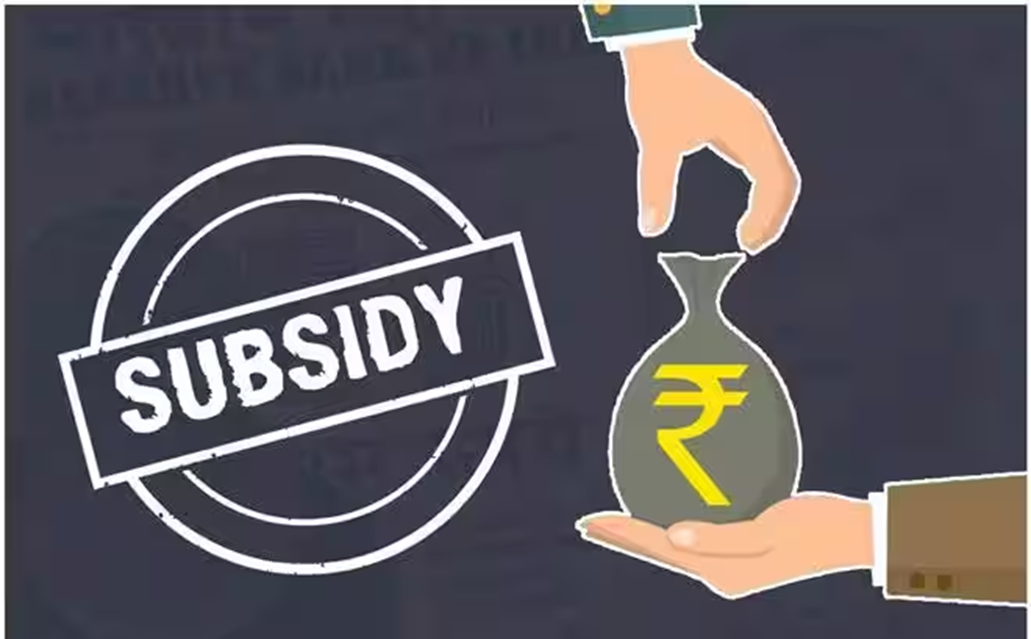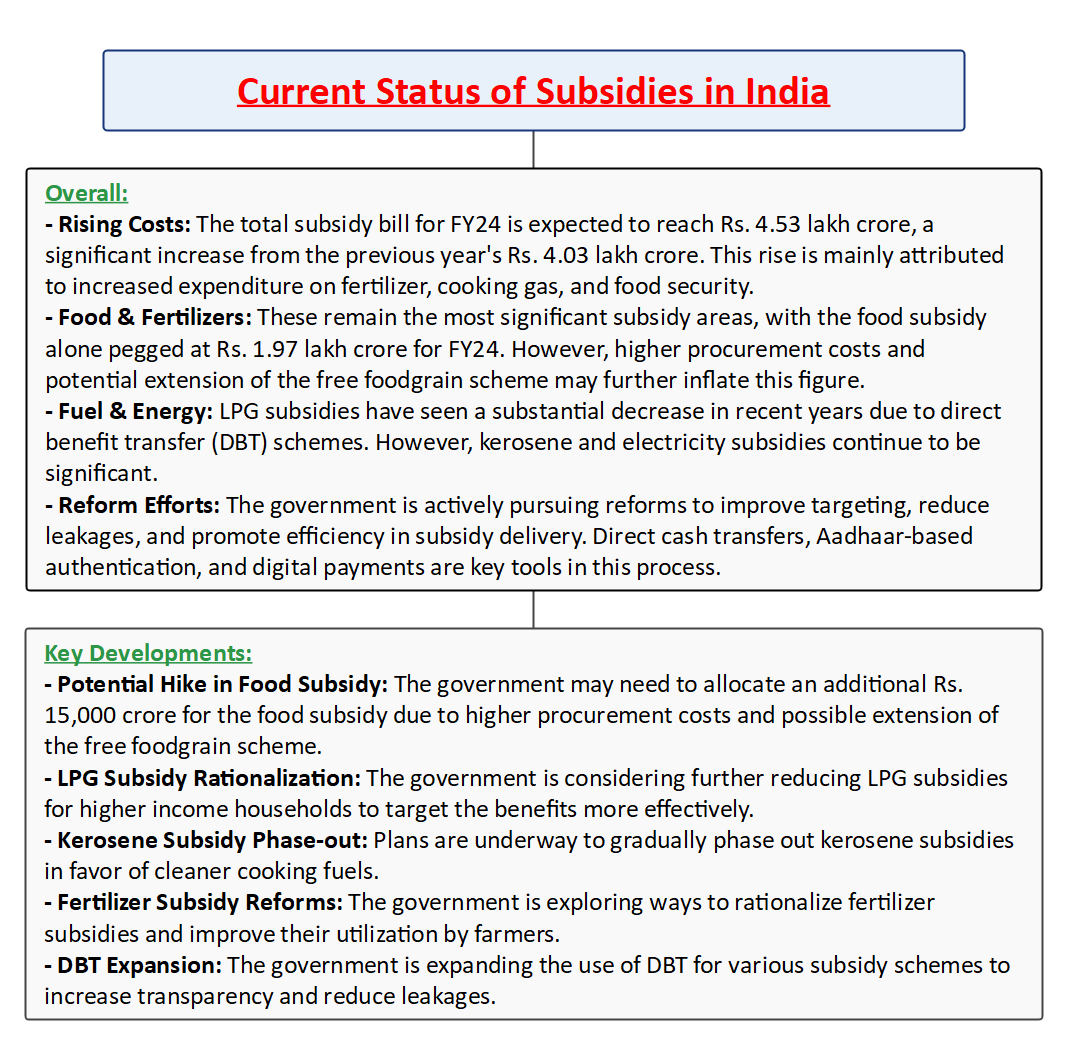Free Courses Sale ends Soon, Get It Now


Free Courses Sale ends Soon, Get It Now



Copyright infringement not intended
Picture Courtesy: www.financialexpress.com
Context: The increase in the subsidy bill for the government's second term compared to the first term can be attributed to several factors, including changes in global economic conditions, policy decisions, and external events like the COVID-19 pandemic and the Russia-Ukraine war.
Key Highlights
2014-2019
After 2019
Impact of COVID-19 Pandemic
Russia-Ukraine War
|
The increase in the subsidy bill can be attributed to a combination of policy decisions, external factors like the COVID-19 pandemic and the Russia-Ukraine war, and the government's commitment to supporting farmers and vulnerable sections of society through subsidies and transfers. |
Future Outlook
Subsidies
Types of Subsidies
Implementation Mechanisms
Challenges and Criticisms
Reforms and Initiatives

Conclusion
Must Read Articles:
Fertilizers Subsidy: https://www.iasgyan.in/daily-current-affairs/fertilizers-subsidy
|
PRACTICE QUESTION Q. Can India's current fiscal situation sustain the increasing burden of subsidies, particularly in the face of rising global food and energy prices? How can the government balance the immediate needs of vulnerable populations with the long-term fiscal sustainability of subsidy programs? |
© 2024 iasgyan. All right reserved